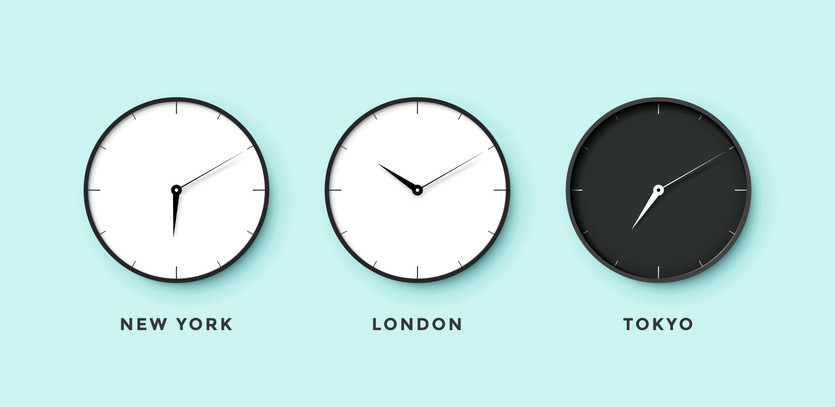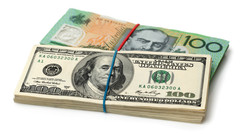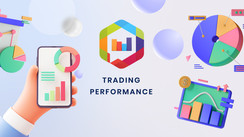Forex Market: An Intricate Network of Global Currency Trades
The foreign exchange market, colloquially known as forex, is an intricate global, decentralized market. This bustling financial epicenter never sleeps, with heightened periods of activity often occurring during overlaps in major regional trading hours.
These overlap periods are particularly noteworthy as they usually accompany a narrowing of trading spreads — the differential between bid prices and ask prices. Such shifts present a golden opportunity, with market makers facilitating currency trades taking a smaller cut, and traders pocketing a more substantial slice of the profits.
Key Strategies for Profitable Forex Trading
Forex trading is akin to a global relay race, passing the baton across four key markets: London, New York, Sydney, and Tokyo. Successful traders often have the trading hours of these significant markets etched in their memory, especially the periods of overlaps.
When two of these markets are open simultaneously, the trading volume surges and volatility spikes. Volatility, or the rate of price changes for a set of returns, can be a daunting term for some investors. But in the realm of forex, volatility often dances with opportunity, opening the doors to higher potential profits.
The Core Quadrants of the Forex Markets: London, New York, Sydney, and Tokyo
In the pulsating, round-the-clock world of forex trading, the rhythm never skips a beat from 5 p.m. Sunday to 4 p.m. Friday Eastern Standard Time (EST). This relentless tempo is echoed around the globe, with distinctive beats emanating from four critical regions: London, New York, Sydney, and Tokyo. Each region has major exchanges, each with its unique trading hours spanning Monday to Friday. Let's delve deeper into these key time windows (all times in EST):
1. London: The European Hub
Operating hours: 3 a.m. to 12 p.m. (noon)
The London market, one of the oldest in the world, is also one of the most diverse, trading a vast variety of currencies. Its strategic location and operating hours make it overlap significantly with both the Asian and North American markets.
2. New York: The Western Powerhouse
Operating hours: 8 a.m. to 5 p.m.
New York, another prominent player in the forex market, witnesses significant trading volumes due to its overlap with the London market. This crossover period is often marked by high volatility and offers a lucrative opportunity for traders.
3. Sydney: The Pacific Gateway
Operating hours: 5 p.m. to 2 a.m. (midnight)
As one of the first markets to open after the weekend, Sydney plays a critical role in setting initial currency trends for the week. Traders often keep a close eye on the Sydney market for early indications of market patterns.
4. Tokyo: The Asian Beacon
Operating hours: 7 p.m. to 4 a.m.
The Tokyo market, often representing broader Asian market trends, is known for trading specific currency pairs. It is a key market to monitor, particularly for trades involving Asian currencies.
Despite each market marching to its beat, they all dance to the same global tune of currencies. The symphony unfolds when two markets are open simultaneously, leading to a surge in active traders and dramatic price shifts in the forex marketplace.
This synchronization reduces market spreads and boosts volatility, especially in the following key windows:
- 8 a.m. to noon – A time of vigorous activity with the New York and London markets both open.
- 7 p.m. to 2 a.m. – A critical window when the Tokyo and Sydney markets overlap.
- 3 a.m. to 4 a.m. – An hour of opportunity when the Tokyo and London markets interact.
Among these periods, the 8 a.m. to noon overlap of the New York and London exchanges is often regarded as the most rewarding trading window, responsible for over half of all forex trades. Conversely, from 5 p.m. to 6 p.m., trading mostly occurs in the Singapore and Sydney exchanges, which see less volume compared to the London/New York window.
Remember, exceptions to these trends can surface, particularly if unexpected news breaks. For instance, political or military crises that occur during traditionally slower trading hours could potentially cause a spike in volatility and trading volume.
Lastly, keeping track of the scheduled releases of certain economic data that can move the market is essential. Some of these key indicators include employment figures, Consumer Price Index (CPI), trade deficits, and consumer confidence and consumption indicators. Armed with this knowledge, traders can strategically plan their trades for optimal outcomes.
Navigating the Churning Seas of High-Volume Forex Trading
High-volume forex trading hours can be likened to a stormy sea. While the potential for profit can be vast, the risk of losses can be just as great. Therefore, forex traders should navigate these waters with caution, as currency trades often involve high leverage rates of 1,000 to 1.8. While the prospect of significant profit opportunities is tempting, the flip side could mean the loss of an entire investment in a single trade.
Forex trading can be a turbulent journey, especially for newcomers. It's often recommended that new forex investors dip their toes in the water by opening accounts with firms that offer demo platforms. Here, you can partake in mock forex trades, taking note of gains and losses to gauge your potential performance with real trading. As you gain confidence and understanding, you can then transition to live forex trading.
Remember, forex trading, like many other investments, is a double-edged sword. While you can reap significant profits, there's also the potential for losses. Therefore, always be prepared for the inherent risks.
What exactly is forex trading?
Forex trading is essentially a global marketplace where traders buy and sell different currencies. The goal is to profit from fluctuations in relative currency values. Most of these transactions occur over the phone or via electronic platforms, not on physical exchanges. Each trade deals with a pair of currencies.
How many trading hours per day do I need to make profits in forex?
Earning profits in forex trading isn't so much about the time spent trading, but rather about the percentage of successful trades and the magnitude of those profits.
How do I get started with forex trading?
Entering the world of forex trading requires an initial deposit with a brokerage. While some brokerages don't impose a minimum trading amount, you typically need between $50 and $500 to start. It's a good idea to make some practice trades on a demo platform before venturing into live trading with real money.





